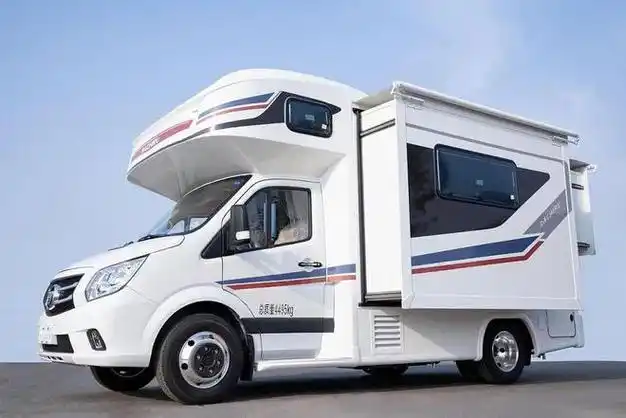
Recreational vehicles (RVs) are widely loved for their convenience and adaptability, with seven popular types falling into two main categories: Motorhomes and Trailers.
Motorhomes
Motorhomes integrate the cockpit with the living space, offering an all-in-one solution. They are further divided into:
Class A
- Appearance: Resembles a bus; ranges from 26 to 45 feet long.
- Features: Luxurious amenities, including kitchens, separate bedrooms, bathrooms, and slide-outs for extra space.
- Electrical System: 48V DC or 120V AC with a maximum current of 50A.
- Pros: Home-like facilities, spacious, and ideal for extended trips.
- Cons: High cost, challenging to maneuver and park.
Class B
- Appearance: Compact and van-like; smallest Motorhome type.
- Features: Limited facilities due to the smaller size.
- Electrical System: 12V or 24V DC, 120V AC with a maximum current of 30–50A.
- Pros: Easy to drive and park; suitable for urban areas and narrow roads.
- Cons: Limited living space.
Class C
- Appearance: Mid-sized, around 30 feet long, with a distinctive cab-over design.
- Features: Balanced size and amenities, catering to a wide range of needs.
- Electrical System: 12V or 24V DC, 120V AC with a maximum current of 30–50A.
- Pros: Versatile and cost-effective.
- Cons: Moderate in all aspects; not the best for specific needs.
Trailers
Trailers lack a cockpit and require a towing vehicle. They include:
5th Wheel
- Features: Luxurious, spacious, and cost-effective compared to Class A.
- Electrical System: 12V or 24V DC, 120V AC with a maximum current of 30–50A.
- Pros: Large interior, flexible detachment, and passenger riding allowed during transit.
- Cons: Requires a powerful pickup truck; challenging to drive and park.
Toy Hauler
- Features: Designed for outdoor enthusiasts; includes a rear drop-down gate for storing bikes or motorcycles, and some models have balconies.
- Electrical System: 12V or 24V DC, 120V AC with a maximum current of 30–50A.
- Pros: Great for outdoor activities.
- Cons: Limited luxury.
Travel Trailer
- Features: Highly versatile with varying sizes, appearances, and features based on budget.
- Electrical System: 12V or 24V DC, 120V AC with a maximum current of 30–50A.
- Pros: Adaptable to different preferences and budgets.
- Cons: Varies significantly in quality and features.
Pop-up
- Features: Compact and lightweight; expandable for use, resembling a tent.
- Electrical System: 12V DC, 120V AC with a maximum current of 15A.
- Pros: Affordable and convenient for short outdoor trips.
- Cons: Limited space and amenities.
Battery Upgrades for RVs
RVs primarily come with AGM batteries but can benefit from upgrading to Lithium Iron Phosphate (LFP) batteries due to their superior performance:
- Longevity: Over 10 years and 4,000+ cycles.
- Efficiency: Higher depth of discharge (DOD) of 80%+ compared to AGM’s 50%.
- Fast Charging: Supports quick charge and discharge.
- Safety: Maintenance-free and explosion-resistant.
Charging Methods
RVs support multiple charging methods:
- Shore Power: Plugging into an external power source.
- Solar Panels: Eco-friendly and ideal for off-grid use.
- Generators: Provides power during travel or in remote areas.
- Alternators: Charges batteries while driving.
Conclusion
Understanding the various RV types and their electrical systems allows you to choose one that fits your needs. Whether upgrading to LFP batteries or selecting a specific RV type, making informed decisions ensures an enjoyable and efficient RV experience.
